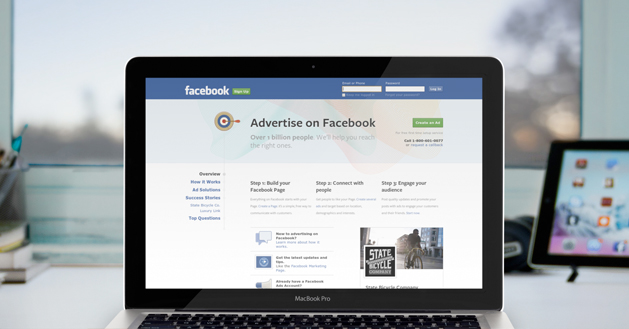Could Your Facebook Ad Campaign Become A Disaster?
For businesses seeking exposure, paying for Facebook ads has
become a popular option. The site has 1.2 billion users, after all,
making it an ideal outlet for ad placement. But through a complicated turn of
events, some business owners are
finding that their ad campaigns are backfiring on them, prompting them to
caution other advertisers.
The Campaign
Advertisers have been drawn in by Facebook’s offering of a
“Suggested Post” or “Suggested Page” ad at an affordable rate. These ads are aimed specifically at earning
likes for advertised pages, earning businesses an increased audience for their
posts.
At face
value, it’s an advertising strategy that should work. In fact, many businesses
have achieved additional likes from the exposure. Once someone has liked a
business’s fan page, that person sees updates on newsfeeds, which could also
prompt that person to share those posts with their own Facebook friends. It’s
one of the primary methods for gaining an audience on Facebook.
The Issue
According to an article in Business Insider, several Facebook page
owners have complained that their ads have brought chaos to their pages. These
businesses claim many of the likes are coming from “click farms”—a practice
where low-paid workers are tasked with conducting a series of tasks in order to
boost traffic to a site.
Because
these business owners are paying for legitimate traffic from customers who are
genuinely interested in their products or services, these fake likes are
bothersome. With so many useless followers, the complaining businesses feel
that they can no longer use the site to market effectively.
Click Farms
The next logical question is, “Why?” Why would these click farms
pay people to click like on Facebook pages? As Business Insider recently explained, likes help legitimize a profile, giving it
perceived interests as though it’s attached to a real individual.
Facebook is aware of the problem and has, in fact, made efforts to
pinpoint and delete fake accounts from its site. The company estimates that a mere
0.4% to 1.2% of all accounts are responsible for creating fake likes. But when
one percent of your user base exists to click the like button seven thousand
times a day, this can pose a serious problem.
Empowering Businesses
One request
from the complaining businesses is that Facebook equip page owners with the
ability to delete fake accounts in bulk. Currently, these advertisers are
forced to individually remove each fake account. Once hundreds
of thousands of fake likes pile up, businesses are faced with an almost
insurmountable obstacle.
To help avoid the problem, Business insider recommends removing
areas of the world it defines as “problem countries” from an ad’s reach. Those
countries include Mexico, Portugal, India, Philippines, and Brazil, among
others. Many click farms pay wages well below American minimum wage, so
businesses should ensuring their ads are seen only in those areas where workers
wouldn’t spend all day clicking the like button for a couple of dollars.
A Facebook Problem
While currently, the problem belongs to advertisers , Facebook has more to worry about than a few
very vocal complaints. These fake profiles stand to disrupt the company’s ad
revenue, which was up 63 percent last quarter. The company acknowledged to Business
Insider that fake likes are a problem and said that both automated and manual
systems are being put in place to crack down on the problem.
It’s
important to note that Facebook’s advertising program has many satisfied
customers, with these complaints currently serving as isolated incidents. Until
the problem dissipates, businesses could do well to focus their campaigns on
North America, Europe, and other
countries not normally found to have click farms and closely monitor their
campaigns to make sure followers are legitimate Facebook pages.



Comments
Post a Comment